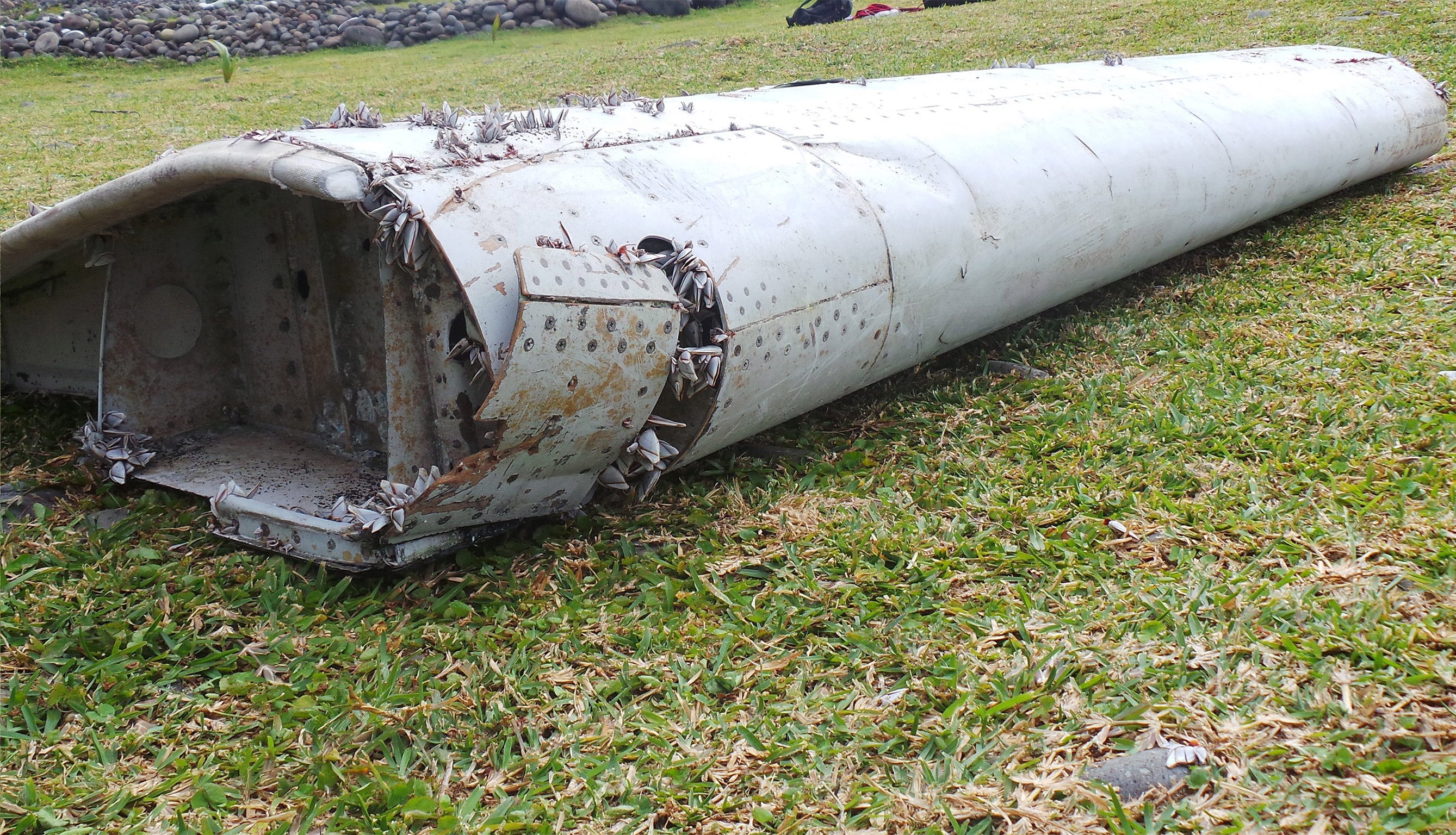MH370 debris confirmed: What has been found from the aircraft – and what does it tell us?
A flaperon found on Reunion was from MH370, it has been confirmed

Your support helps us to tell the story
From reproductive rights to climate change to Big Tech, The Independent is on the ground when the story is developing. Whether it's investigating the financials of Elon Musk's pro-Trump PAC or producing our latest documentary, 'The A Word', which shines a light on the American women fighting for reproductive rights, we know how important it is to parse out the facts from the messaging.
At such a critical moment in US history, we need reporters on the ground. Your donation allows us to keep sending journalists to speak to both sides of the story.
The Independent is trusted by Americans across the entire political spectrum. And unlike many other quality news outlets, we choose not to lock Americans out of our reporting and analysis with paywalls. We believe quality journalism should be available to everyone, paid for by those who can afford it.
Your support makes all the difference.A wing fragment which washed up on the Indian Ocean island of Reunion over a year after Malaysia Airlines Flight MH370 disappeared is from the missing aircraft, officials have confirmed.
Malaysian Prime Minister Najib Razak told a press conference that an international team of experts have “conclusively confirmed” that the debris discovered on the island was from the missing Boeing 777.
Malaysia Airlines has also confirmed that they are aware of the conclusion made by the French agency investigating the discovery of the wing part, or flaperon.
“Family members of passengers and crew have already been informed and we extend our deepest sympathies to those affected,” the airline said.
As experts analyse the first piece of physical evidence from the missing aircraft, we recap the investigation into flight MH370, which disappeared on 8 March 2014 en route from Kuala Lumpur to Beijing.
What have they found?
A flaperon appeared on Reunion last week, and was sent to France to be assessed by experts, and has now been verified as genuine.
Now, a burnt piece of luggage and a rounded piece of plastic thought to be a window will also be assessed to clarify whether they are from the aircraft.
Police on the island have said they have had to rule out dozens of other potential finds from the plane, as residents attempt to help investigators.
What does the find tell us?
Following a high-tech investigation last year into the jet’s final hours before it would have run out of fuel, experts said they believed the plane came down in the southern Indian Ocean.
The flaperon washing up on Reunion is therefore consistent with the working theory that the jet went down in the Indian Ocean.
What next?
The BEA, the French agency which investigates air crashes, as well as experts from Boeing, will travel to the town near Toulouse, southern France, to join the probe.
Investigators will now use high-powered microscopes to analyse the barnacle-covered flaperon in a bid to understand what caused the plane to go down.
Those investigating the tragedy must also now uncover why the plane deviated so far from its planned route.

It is hoped that close inspection of the wing part will indicate what kind of stress the plane was under as it made impact.
But the wing will not answer questions about why the plane disappeared or what caused it to crash.
Some experts believe it may have run out of fuel, but other analysts say the wing’s good condition points towards a controlled ocean landing, with the jet sinking largely intact.
Another answer could be that the jet fell vertically into the water, and both wings snapped off on impact.
Yet another possibility, supported by a flight simulator, is that an out-of-fuel Boeing 777 would belly-flop heavily tail-first, disintegrating on impact.
Additional reporting by AP
Join our commenting forum
Join thought-provoking conversations, follow other Independent readers and see their replies
Comments